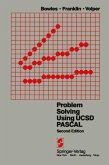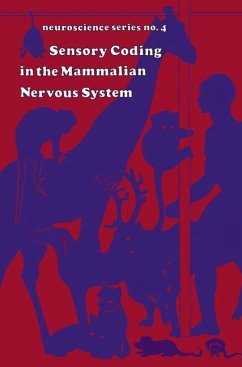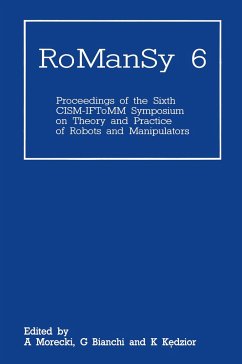Introduction: Questioning Apes.- Varieties of Interspecific Communication.- Two Modes of Animal Training: Apprentissage versus Dressage.- Great Expectations.- Observational and Recording Errors.- Ockham¿s Razor.- Clever Hans Effect.- Antecedents of Ape ¿Language¿ Researches.- Exorcising Hans¿s Spirit.- Uses of Authority and Self-Control.- The Double-Blind Strategy.- Alone in a Crowd.- The Clash of Umwelten in Fact and Fiction.- Conclusion.- References.- Communication and Language in the Home-Raised Chimpanzee.- The Ape-Rearing Experiment.- The Pronunciation of Words.- Comprehension of Language.- Spontaneous Gesturing.- Two-Way Communication by Gesture.- Summary.- A Word Between Us.- What is Language? (I).- Parenthetic Remarks on Cognition.- What is Language? (II).- The Study of Language Communication across Species.- A Word between Us.- The First Sentences of Child and Chimpanzee.- Washoe¿s Signing Progress.- The Available Data on Child Speech.- Major Meanings in Stage I.- Comparison of Washoe and Child.- Language, Name, and Concept.- Chimpanzee and Child.- The Chimpanzees¿ Signs as Names.- A Characterization of Language.- Disengagement from Context.- The Child¿s Sentences.- Language and Concept.- Of Language Knowledge, Apes, and Brains.- Language Knowledge: Formal Constants of Cognitive Achievement.- The Capacity for Arithmetic.- The Capacity for Language.- Apes: Heuristics of Cross-Species Comparison of Cognitive Function.- Brains: Preliminaries to Theorizing.- Fiber Connections.- Indivisibility of Language Knowledge.- Discussion.- Can Chimpanzees Learn a Phonemic Language?.- Sentence Structure in Chimpanzee Communication.- Washoe.- Washoe¿s Combinations.- Word Order.- Negation and Questions.- Encoding Propositions about the Physical World.- Sarah and the Perceptibility of Linguistic Structure.- A Different Grammatical System?.- Aspects of Chimpanzee Life.- Language, Communication, Chimpanzees.- Washoe.- Sarah.- What Might be Learned from Studying Language in the Chimpanzee? The Importance of Symbolizing Oneself.- Project Sarah.- Project Lana.- Project Washoe.- Conclusion.- Chimpanzees and Language Evolution.- Language in Child and Chimp?.- What Accounts for Our Fascination with This Issue?.- Can Apes Actually Learn a Human Language?.- On the Nature of Language.- The Separation of Structure and Function.- The Use of Names.- Syntax and Creativity.- Chimp and Child Compared.- The Use of Names.- Syntax in Children.- Syntax in Chimps.- Productivity in Chimpanzee Language.- Why Don¿t Apes Use Human Language?.- Historical Accounts.- Anatomical Differences.- Nonmaterial Differences.- Experiential Differences.- Contemporary Accounts of Primate Differences.- Vocal Tract Differences.- Central Nervous System Differences.- Cognitive Limitations on Language.- A Genetic Predisposition for Language?.- Concluding Remarks on Language, Thought, and Apes.- Primate Vocalization: Affective or Symbolic?.- Language Behavior of Apes.- Behavior and Access to Language Origins.- Language in Comparative Perspective.- Primate Intelligence and Learning.- Cross-Modal Perception.- The Evolution of Human Speech.- Summary.- The Language Projects.- Project Viki.- Project Washoe.- Washoe¿s Laboratory.- Teaching Methods.- Project Sarah.- The Lana Project.- Other Ape Language Projects.- Chimpanzee Language Skills and Intelligence.- A Comparison of the Language Projects.- Discussion.- Implications for the Definition of Language.- Implications for Learning Research.- Language Acquisition and the Formation of Concepts.- Underlying Processes:Homologous or Analogous?.- Projections.- Animal-Model Studies and Perspectives of Language.- Language Research and Psychology.- Man-Chimpanzee Communication.- Historical Developments and Speculation Concerning Communication.- The Great Apes.- The Influence of the Home-Raising Experiments.- Peter.- Joni.- Gua.- Viki.- Other Experiments.- Conclusions about Home-Raising Experiments.- Project Washoe.- Methods of Acquisition.- Manual Babbling.- Shaping.- Guidance.- Molding.- Observational Learning.- Recording Washoe¿s Signs.- Testing Procedures.- Washoe and the Oklahoma Chimpanzees.- Chimpanzee-to-Chimpanzee Communication Using Ameslan.- Sarah and Communication via Plastic Objects.- Lana and the Computer.- Comparison of the Methods.- Conclusions.- Comparative Psychology and Language Acquisition.- Project Washoe.- Appropriate Laboratory Conditions.- A Natural Language.- Fluent Signers as Adult Models.- Newborn Chimpanzees as Subjects.- Intellectual Maturity.- Multiple-Subject Project.- Linguistic Development.- Vocabulary.- Criterion of Reliability.- Reassessment.- Semantic Range.- First Signs of Child and Chimpanzee.- Structure.- Combination, Inflection, and Prosodic Features.- Ameslan Only.- Word Order and Sign Order.- First Combinations of Child and Chimpanzee.- Plastic Tokens and Lighted Panels.- Rote Memory.- Learning Sets.- Plastic Tokens.- Lighted Panels.- Rigorous Testing under Naturalistic Conditions.- A Test of Vocabulary.- Evaluation by Deaf Observers.- Test of Combinations.- Replies to Wh-Questions.- Sentence Constituents.- Question Frames.- Comparison with Human Children.- Productive versus Forced-Choice Tests of Competence.- Contributions to Developmental Psychology.- But Is It Language?.- Apes and Language.- The Experiments.- Experiments Using Ameslan.- Experiments Using Artificial Languages.- Criticism of the Experiments.- Pigeon Ping-Pong.- Symbolic Capacity.- Productivity.- Facility in Acquisition.- Comparisons with Wild Systems: Context.- Communicative Function.- Conclusions.- Linguistically Mediated Tool Use and Exchange by Chimpanzees (Pan Troglodytes).- Phase I: Requesting Tools.- Phase II: Separation of the Tool from Its Function: The Development of Nonfunctional Naming Capacity.- Phase III: Interanimal Communication.- Interanimal Communication and Its Significance in the Perspective of Earlier Ape-Language Studies.- Project Washoe.- Project Sarah.- Conclusion.- Is Problem-Solving Language?.- Teaching the Language.- Language or Discrimination Learning?.- Sentences or Rotely Learned Sequences?.- Prepositions.- Predicates.- Syntax.- Attribution.- From Demonstrative Pronoun to Demonstrative Adjective.- Conjunction.- Intellectual Foundations of Language or Problem Solving?.- Morgan¿s Canon Revisited.- Looking in the Destination for What should have been Sought in the Source.- Human Language and Other Semiotic Systems.- Do You Speak Yerkish? The Newest Colloquial Language with Chimpanzees.- References.- Index of Names.
Hinweis: Dieser Artikel kann nur an eine deutsche Lieferadresse ausgeliefert werden.
Hinweis: Dieser Artikel kann nur an eine deutsche Lieferadresse ausgeliefert werden.









